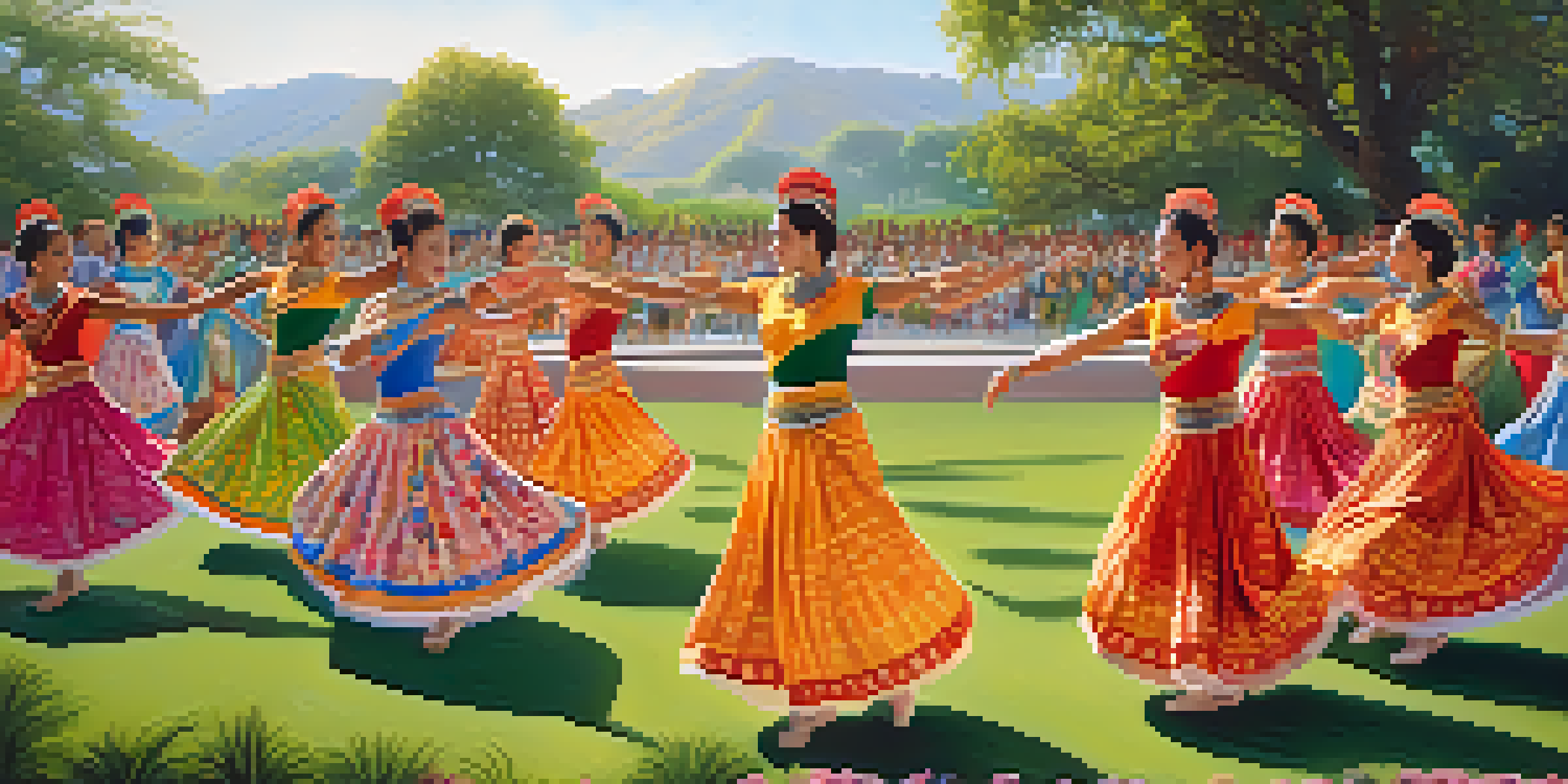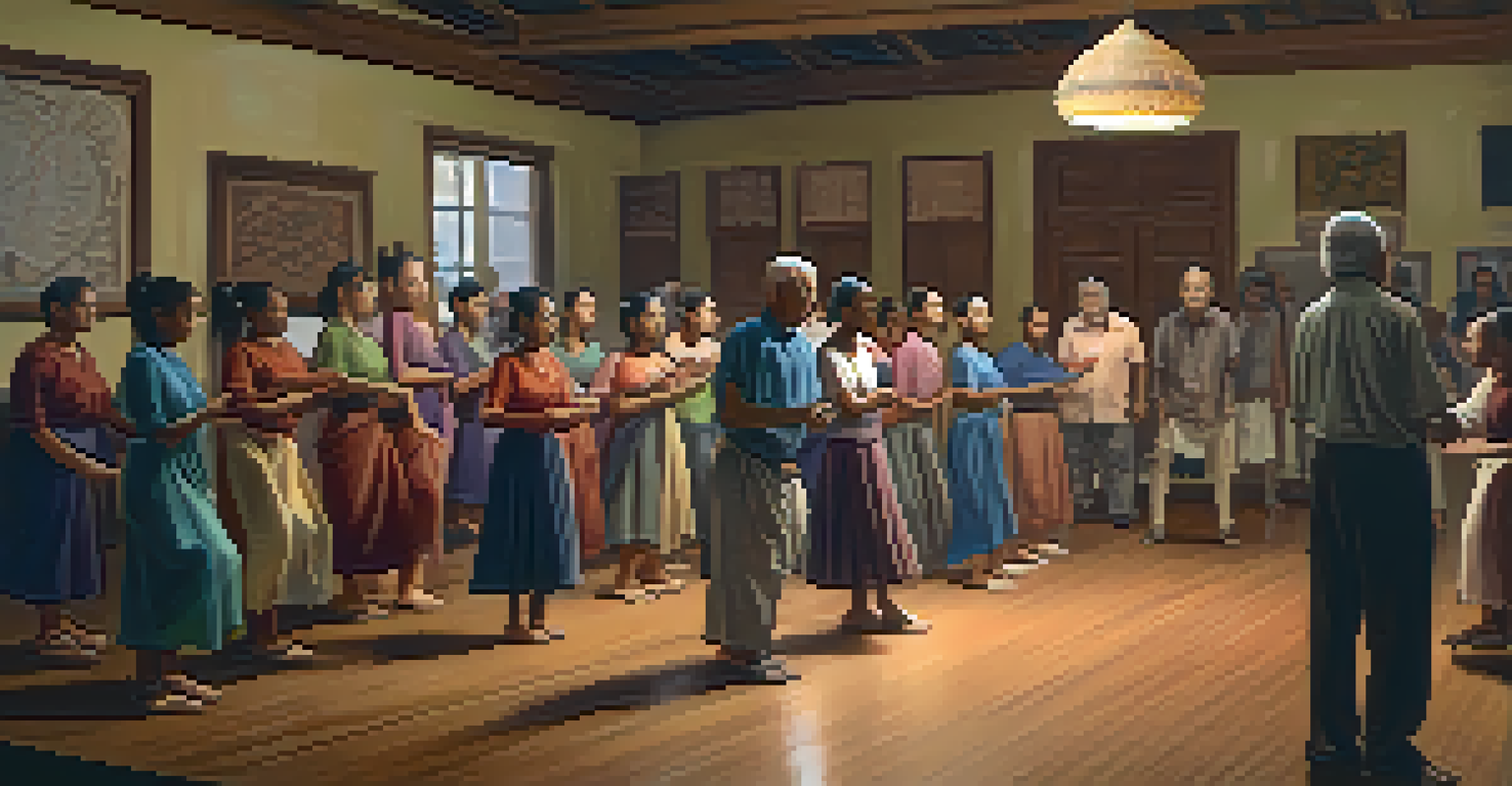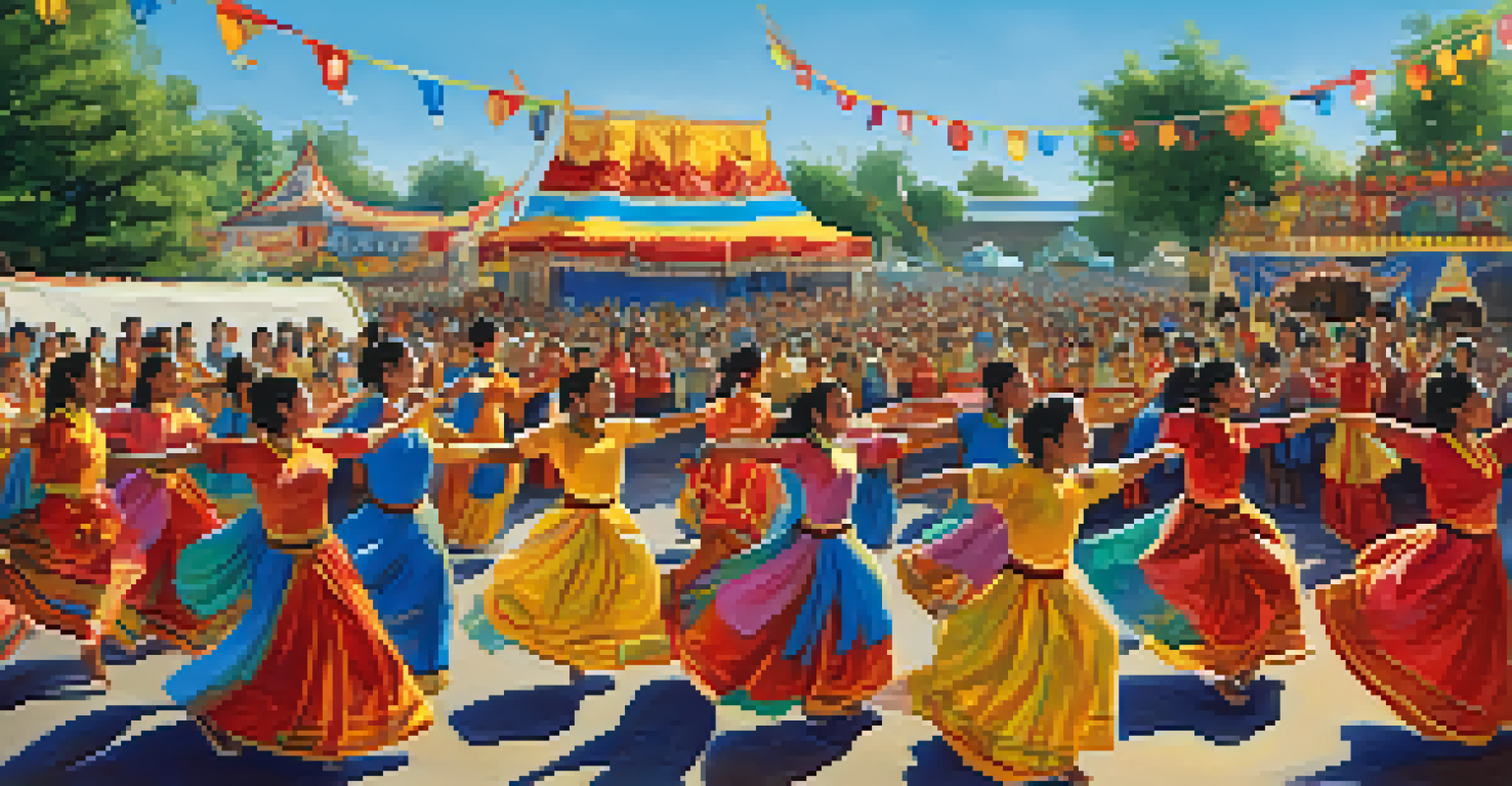The Role of Dance in Preserving Folklore Narratives

Understanding Folklore: The Heart of Cultural Heritage
Folklore encompasses the traditions, stories, and practices passed down through generations. It reflects a community's identity, values, and historical experiences, acting as a tapestry that weaves together the past and present. From tales of mythical creatures to rituals marking seasonal changes, folklore is a living entity that evolves with society.
Folklore is a living expression of a culture's identity, evolving yet rooted in the past.
Dance, as a form of expression, is intricately linked to these narratives. It serves not only as entertainment but also as a method of storytelling that transcends language barriers. Through movement, dancers embody the emotions and themes of folklore, bringing stories to life in vibrant and captivating ways.
As communities face modernization and globalization, preserving these narratives becomes crucial. Dance acts as a bridge, connecting younger generations to their cultural roots and ensuring that the essence of folklore remains alive in a rapidly changing world.
The Historical Significance of Dance in Folklore
Historically, dance has played a pivotal role in rituals and celebrations, often serving as a vehicle for storytelling. For instance, traditional dances are frequently performed during harvest festivals or weddings, illustrating social customs and shared beliefs within a community. These performances not only entertain but also reinforce cultural identity and continuity.

By preserving historical dances, communities maintain a connection to their ancestors and the stories they told. Each movement, rhythm, and gesture carries a piece of history, evoking memories that might otherwise fade. In this way, dance becomes a living archive, safeguarding the narratives of the past.
Folklore: Cultural Identity's Core
Folklore encapsulates a community's identity and values, serving as a living tapestry that evolves with society.
Moreover, these dances often adapt over time, reflecting changes in society while still honoring their origins. This fluidity allows folklore narratives to remain relevant, engaging new audiences while keeping the traditions intact.
Dance as a Storytelling Medium: Techniques and Styles
Various dance styles serve different storytelling purposes, showcasing the diversity within folklore. For example, ballet often tells tales of love and tragedy, while folk dances like the Irish jig highlight community and celebration. Each style utilizes unique techniques—like rhythm, formation, and expression—to convey specific narratives.
Dance is the hidden language of the soul.
In many cultures, dance movements are symbolic, representing elements of the story being told. For instance, in Native American dances, the movements might mimic animals or natural elements, reflecting a deep connection to the earth. This symbolism enriches the narrative, allowing the audience to engage on multiple levels.
As dancers perform, they invite the audience into the story, creating a shared experience that transcends time and space. This participatory aspect is crucial, as it fosters a sense of belonging and collective memory, ensuring that the stories endure.
The Role of Community in Dance and Folklore Preservation
Community involvement is vital in maintaining and evolving dance traditions. Local dance groups, schools, and cultural organizations often play key roles in teaching traditional dances, passing knowledge from elders to youth. This transmission of skills and stories helps to keep folklore narratives vibrant and relevant.
Additionally, community events such as festivals and performances serve as platforms for sharing these dances with a wider audience. These gatherings not only celebrate cultural heritage but also foster social cohesion, bringing people together to enjoy and learn from one another's stories.
Dance: A Bridge to Heritage
Dance plays a crucial role in preserving folklore by connecting generations and reinforcing cultural narratives.
By actively participating in dance, community members reinforce their connection to their cultural identity. This collective effort ensures that folklore narratives are not only remembered but also celebrated and cherished.
The Influence of Modern Dance on Traditional Folklore
Modern dance has transformed the way folklore is expressed and perceived. Choreographers often blend traditional movements with contemporary styles, creating innovative performances that attract diverse audiences. This fusion keeps folklore alive, proving that it can adapt to modern sensibilities without losing its essence.
However, this blending raises questions about authenticity. While some argue that modern interpretations can dilute the original narratives, others believe that evolution is essential for survival. Finding a balance between tradition and innovation is key to keeping folklore relevant in today's world.
Ultimately, modern dance can serve as a gateway, introducing new audiences to folklore narratives. By captivating viewers with fresh interpretations, it sparks interest and curiosity about the rich stories behind the movements.
Dance Education: Teaching Folklore Through Movement
Educating young dancers about the significance of folklore is essential for preservation efforts. Dance programs that incorporate storytelling elements allow students to understand the cultural context behind the movements. This knowledge fosters a deeper appreciation for their heritage, encouraging them to carry on the traditions.
Workshops and classes focused on traditional dances create opportunities for hands-on learning. Participants not only learn the steps but also the stories and meanings behind each dance, enriching their experience. This engagement makes dance a powerful tool for cultural education.
Modern Dance and Tradition Fusion
The blending of modern dance with traditional forms can both enrich and challenge the authenticity of folklore narratives.
Moreover, integrating folklore narratives into dance education helps combat cultural disconnection. As students learn about their ancestry through movement, they develop a sense of pride and responsibility to share these stories with future generations.
The Global Impact of Dance on Folklore Narratives
Dance transcends geographical boundaries, allowing folklore narratives to be shared globally. Festivals and international events showcase various dance forms, creating a platform for cultural exchange. This engagement fosters understanding and appreciation of diverse storytelling traditions.
As communities connect through dance, they inspire each other to explore and innovate within their own folklore. This exchange can lead to new interpretations and adaptations, enriching the global tapestry of cultural narratives. The beauty of dance is that it unites people under shared stories, regardless of their origins.

However, this global influence also brings challenges. The risk of cultural appropriation looms, as traditional dances are sometimes taken out of context. It's essential for dancers and audiences alike to approach these narratives with respect and understanding, ensuring that the stories remain true to their origins.